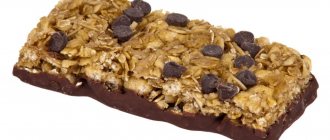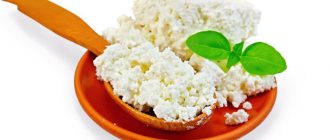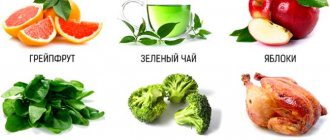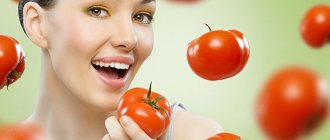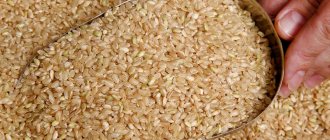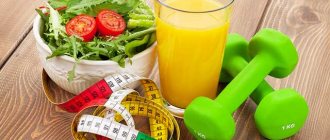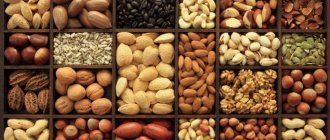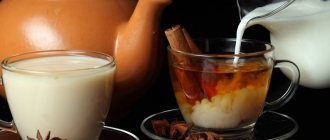How to replace salt in food
Trying to find the answer to the question of what can replace salt in a diet, many do not even imagine that there are products that can become a complete replacement for salt.
They are worth taking a close look at if you decide to seriously change your diet. Even if you are forced to give up salt for medical reasons or are concerned about the health of your family, using these products and seasonings, you do not feel disadvantaged.
So, how to replace salt in food so as not to deprive yourself of gastronomic pleasure?
Is salt possible with proper nutrition and weight loss?
You shouldn’t completely eliminate the spice when losing weight, and it won’t work. The fact is that a small amount of it is initially contained in food products (cheese, nuts, bread, sauces, fish, meat, etc.).
Important!
With proper nutrition, you can consume no more than 5 g of salt, and on a diet, the daily dose is reduced to 2.5 g. It is better to add it to ready-made dishes to preserve its benefits.
Beneficial properties of salt:
- It supplies the body's cells with chlorine and sodium, which ensure its normal functioning.
- Participates in water-salt metabolism, saturates cells with useful substances.
- Maintains normal acid-base balance.
- Controls water levels in the body.
- Ensures normal functioning of the heart and blood vessels, nervous system, and muscles.
- Sodium activates food enzymes, chlorine increases the secretion of hydrochloric acid in the stomach.
- Accelerates the breakdown of fats.
- Promotes bone formation and growth.
The benefits of the spice are evident when consumed in moderation.
Attention!
A lack of salt in food when losing weight can lead to nausea, flatulence, muscle spasms, weakness, headaches, dizziness, decreased immunity, etc.
With constant excessive consumption of spices, its harmful properties appear:
- Fluid retention in the body, swelling.
- Impaired heart function, increased fragility of vascular walls.
- Increased risk of hypertension, stroke, heart attack.
- Impaired elimination of fats, their deposition in the body, weight gain.
- Sodium accelerates the removal of calcium, which threatens a decrease in bone density and osteoporosis.
- Increased intraocular pressure, visual impairment, and increased likelihood of cataracts.
Carefully!
It is recommended to avoid salt in case of diabetes mellitus, diseases of the heart and blood vessels (for example, hypertension), pathologies of the kidneys, liver, lungs, and musculoskeletal system. The spice increases the load on diseased organs, then the risk of complications increases. Then its amount is reduced to 1-1.5 g.
Salt can be consumed when losing weight, but in a minimal amount (up to 2.5 g per day). A complete refusal is permissible only after the doctor’s approval.
Be sure to check out:
Sea kale
It is used both fresh and dried. Sea kale has a natural salty taste, being a source of iodine, vitamins and microelements so necessary for our body. Dried seaweed can be ground in a coffee grinder and sprinkled on cooked dishes. For variety, dry seaweed can be soaked in water for several hours, and then added to salads and other dishes.
Sea salt
For some, this information will be an unpleasant surprise, but the sea salt that can be purchased in any store has nothing to do with natural sea salt. Nice jars with labels containing purified and iodized “sea” salt are just a good marketing ploy to sell the same harmful and lifeless table salt at a much higher price.
Natural sea salt is large, slightly moist, gray crystals. This salt is obtained by natural drying in the sun, and it has such a complex composition of ionic compounds that modern laboratories are not able to recreate it under artificial conditions.
If you want to buy natural sea salt, pay attention to the French brands “Celtic Sea Salt” and “Fleur de sel” or the English “Maldon Salt” - by world standards they are considered the best.
Garlic
This product reduces the body's need for salt, supplying it with all the necessary nutrients. Garlic strengthens the immune system, rejuvenates the body and is a powerful preventative against tumors. It has a very strong taste and strong smell, so you should use moderation, especially if you are going to communicate with people. Dried garlic and garlic powder have a milder taste, and if you still go too far with this seasoning, chew a sprig of parsley or drink a glass of milk to soften the smell.
Soy sauce
It already contains salt, so add it to dishes in small quantities. Natural and properly prepared soy sauce is rich in beneficial amino acids, minerals and vitamins; it slows down the aging of the body, being considered more effective than red wine. Buy high-quality soy sauce, which contains only soybeans and wheat - it should not contain any preservatives. If you want to replace salt with soy sauce, keep in mind that the recommended daily dose is no more than 2 tbsp. l.
Recipes for weight loss without salt
The diet menu includes many delicious and healthy dishes that can be prepared completely without salt. Depending on the chosen nutrition system, you can lose 5-10 kilograms per month. There are many options for salt-free dishes, so you can choose the appropriate dietary menu option yourself.
Red fish in foil
Red fish contains a large amount of organic substances and amino acids. Omega-3 fatty acids help not only normalize metabolism, but also restore the functioning of the digestive system. When losing weight without salt, it is recommended to include in the menu all types of red fish, steamed or oven-cooked.
Be sure to read: Established norms of indicators in tables of height and weight of children
Ingredients:
- Salmon, pink salmon or chum salmon fillet - 400 g;
- Lemon or natural juice - 100 g;
- Dried herbs - to taste.
Cooking method:
- Cut the fish into portions.
- Squeeze the juice from the lemon and drizzle over both sides of the fillets.
- It is recommended to use dried herbs instead of salt. Sprinkle them over the fish, place them on a sheet of foil and wrap them up.
- Bake in the oven for 20 minutes at +180°C until done.
This recipe can be used to cook any fish.
Cold vegetable soup
A wonderful snack for the summer menu and for weight loss is prepared from seasonal vegetables and low-fat kefir. Fresh parsley, green onions and garlic will help replace salt in this soup.
Required Products:
- Radishes (cucumbers) - 200 g;
- Tomato - 200 g;
- Spices and herbs - to taste;
- Kefir - 1/2 liter.
Cooking method:
- Wash the vegetables and cut into small cubes.
- Pour kefir (low-fat) over the products and add herbs and seasonings.
- Let the soup brew for 10 minutes and serve.
For taste, you can add 1-2 slices of fresh lemon.
Vegetable sauté
A tasty and healthy dish suitable for weight loss at any time of the year. If desired, it can be cooked in a saucepan or baked in a ceramic pot in the oven.
Products:
- Zucchini - 1 pc.
- Eggplant - 1 pc.
- Sweet pepper - 3 pcs.
- Tomatoes - 3 pcs.
- Onion - 1 pc.
- Parsley, celery, garlic - to taste.
How to cook:
- Wash all vegetables well and cut into small slices (cubes or bars).
- Place the vegetables in a saucepan, add a little water and simmer, covered, until tender, 20-25 minutes.
- When the vegetables are soft, chop the garlic and herbs into small pieces, add to the pan and stir. To enhance the taste, you can add a little citric acid or a table bite.
Dried vegetables
Tomatoes, sweet bell peppers and celery root have a salty tint and are an excellent analogue of salt in salads, first and second courses. When dried, vegetables retain their taste and aroma, and in terms of vitamin concentration they are superior to fresh vegetables. The most important thing is that dried vegetables are an environmentally friendly product, prepared without chemical additives or preservatives. They make the taste of dishes bright, rich and piquant.
Homemade Teriyaki Sauce
This solution is a great way to elevate soy sauce and add additional benefits to your diet.
Ingredients:
– organic soy sauce – 5 tbsp.
– freshly squeezed orange juice – 50 ml
– peeled garlic – 4 cloves
- fresh peeled ginger root - a slice of about 2 cm.
Preparation:
Place all ingredients in a blender and blend until as smooth as possible. Pour the mixture into a container with a tight-fitting lid and refrigerate overnight. After steeping, the sauce should be strained to remove fibers. Store in the refrigerator and use as needed.
Green and onions
Due to its pungent smell and taste, onions can be used instead of salt. By the way, the pungent aroma of onions is a consequence of the high concentration of sulfur, which cleanses and disinfects the blood. To reduce the harshness, the onion can be doused with boiling water or marinated for several hours.
Horseradish and ginger
The hot roots of ginger and horseradish can replace not only salt, but also hot spices. They can be added to dishes fresh or dried, as well as in various sauces and seasonings. Horseradish is rich in vitamin C and minerals, it is a natural antibiotic and protects the body from viral infections. Ginger tones the body, gives vitality, improves memory and increases performance.
The benefits and harms of table salt for the body
Without salt, a person cannot exist. This substance is the main supplier of essential microelements for the normal functioning of the body - sodium and chlorine. A third of these elements are found in bones, the rest in muscle, nerve tissue, and human extracellular fluid.
Salt is not produced on its own. Sodium is important in intracellular and interstitial metabolism, for maintaining acid-base balance and activating food enzymes. Chlorine is needed in the regulation of water metabolism and the formation of gastric hydrochloric acid. Serious health problems can occur if sodium chloride is completely eliminated from the diet. Mineral deficiency leads to:
- nausea;
- flatulence;
- lack of appetite;
- loss of taste;
- increased fatigue;
- lowering blood pressure;
- weakness, dizziness;
- memory impairment;
- weakened immunity;
- problems with skin, nails, hair;
- development of infections.
Salt enters the body not only as a separate product: a lot of it comes with food. Sources of high concentrations of salt minerals are canned vegetables, sauerkraut, salted herring, smoked sausages, sausages, processed foods and other unhealthy foods. Abuse of the mineral can lead to kidney problems, edema, high blood pressure, intracranial pressure, and eye pressure. Increased sweating, thirst, nervous excitability, frequent urge to urinate indicate an excessive amount of sodium chloride in the body.
Vinegar
For salad dressings, it is better to use natural apple or balsamic vinegar. White or red wine vinegar flavored with aromatic herbs is very good for this purpose. Sherry vinegar with the addition of chicory greens goes well with meat, and rice vinegar is very popular in Chinese cuisine.
Spices and herbs that replace salt
Cilantro, dill, tarragon, oregano, parsley, thyme, sage and basil are very tasty and healthy - fragrant herbs contain many vitamins, increase vitality and improve digestion. Cumin, cumin, rosemary and celery seeds, which have a slightly bitter taste, are excellent substitutes for salt and are used in the preparation of meat, soups and marinades. Smoked paprika, curry and allspice give dishes a spicy aroma and tangy taste, while coriander has a fresh lemony smell.
Herbs to replace salt
A substitute for table salt will be herbs - dill, parsley, basil or oregano. Plant leaves contain a huge amount of vitamins. Regular use of these herbs improves tone, improves the functioning of the digestive system, and stimulates the immune system. Salt will be replaced by cumin and rosemary, which have a bitter taste. It is recommended to add such spices to soup or marinade. For hot dishes (for example, soups), curry, paprika, and allspice are suitable. If you want the finished dish to have a light lemon scent, add coriander seeds.
Preparing “salty” sauces and seasonings
If you mix any vegetable oil with grated onion, garlic, finely chopped herbs and lemon juice, you get a very piquant salad dressing. Instead of onions and garlic, you can add a little mustard powder or ground mustard seeds to the mixture. A very tasty seasoning made from ground seaweed mixed with fried flaxseeds, garlic and herbs. Paprika added to the seasoning will give it a piquant note, and lemon or lime zest will replace lemon juice.
For fish and chicken, a sauce is prepared from mustard and honey - the spicy-sweet taste makes the dish very harmonious. An unusual salad dressing is made from lemon or orange juice with garlic and onions, and the addition of ground nuts to the “salt substitutes” makes the dishes more palatable, appetizing and satisfying. If you always have homemade mayonnaise made from vegetable oil, lemon juice, mustard and pepper in your refrigerator, then none of your household will even remember about salt. For meat and poultry, sour cream mixed with lemon juice and vegetable oil is suitable - if you add garlic, horseradish and ground coriander to the sauce, the meat will turn out quite spicy and tasty.
Many people are so accustomed to salt that they cannot imagine their life without this seasoning. However, after trying the recommended spices and products as a salt substitute, you will change your mind. And, quite possibly, you will salt your food less, but remember that it is not recommended to use hot seasonings and strong spices in children's cuisine. Experiment in moderation!
Harm from salt
In the diet of modern people with an abundance of semi-finished products and industrially produced sauces, the content of sodium salts becomes excessively high.
Doctors have found that the daily need for salt is 5 g (one teaspoon). In hot weather or when playing sports (with increased sweating), its amount should be increased by 2-3 times. Usually a person “eats” up to 25 g per day.
Constantly exceeding the norm leads to dire consequences.
- Sodium retains fluid in the body, causing swelling, causing the development of hypertension and heart problems.
- Kidney function is disrupted, and salt nephropathy gradually develops.
- Eating salty foods increases appetite, leading to unhealthy eating behavior and obesity.
- Calcium excretion increases, bone strength decreases (there is a risk of osteoporosis).
- With a genetic predisposition, increased salt consumption becomes the main cause of the development of autoimmune diseases (type 1 diabetes, multiple sclerosis).
- The risk of developing stomach cancer in a person with chronic gastritis and excessively addicted to salty foods increases by 2 times.
Excess sodium leads to potassium deficiency as they are antagonists. With insufficient potassium intake, increased fatigue, surges in blood pressure, and constant swelling are observed. Excess sodium intake can be eliminated from the body through increased consumption of foods rich in potassium (nuts, fruits, vegetables).
The optimal ratio for good health and maintenance of vital functions is 2 parts K to 1 part Na. But with a traditional diet, the amount of sodium exceeds potassium by tens and sometimes hundreds of times.
Salt is found in almost all foods. Semi-finished meat products, baked goods, cheeses, broths - what the average person consumes every day. The daily requirement of sodium chloride can be easily replenished by eating just one sandwich with bread and sausage. And this does not take into account chips, crackers, dumplings and other fast food, without which many cannot imagine life. In addition to NaCl, other sodium salts are added to them: glutamates, sorbates, benzoates, phosphates...
We cannot influence the amount of salt contained in industrial products (we can only limit their consumption). But it is possible to refuse to add it when preparing homemade dishes. There is no need to be afraid that your usual food will lose its taste. To maintain health without depriving yourself of the pleasure of eating, you can replace table salt with healthy taste enhancers.


